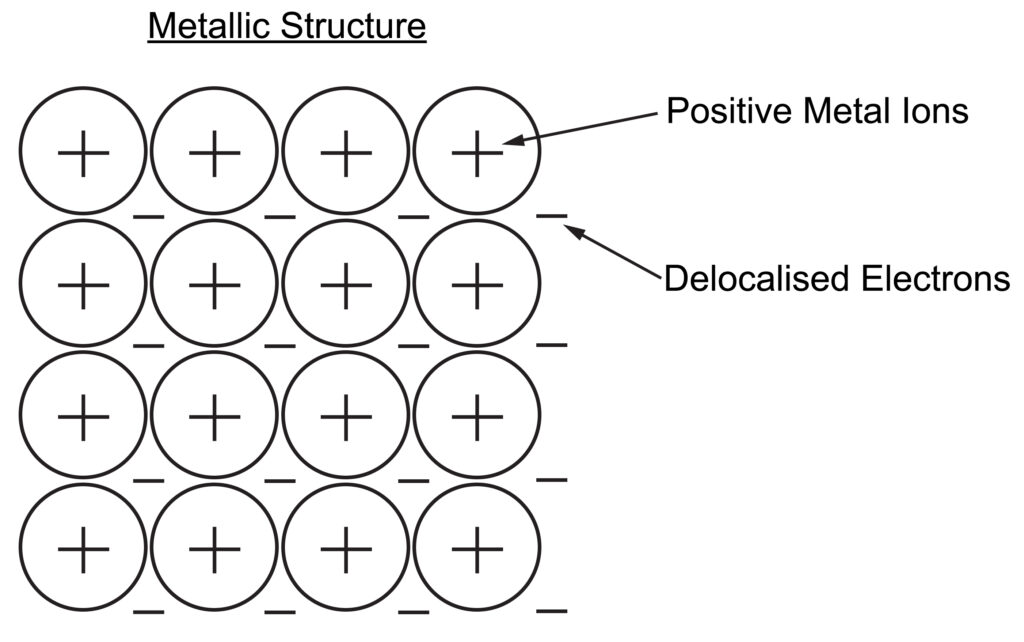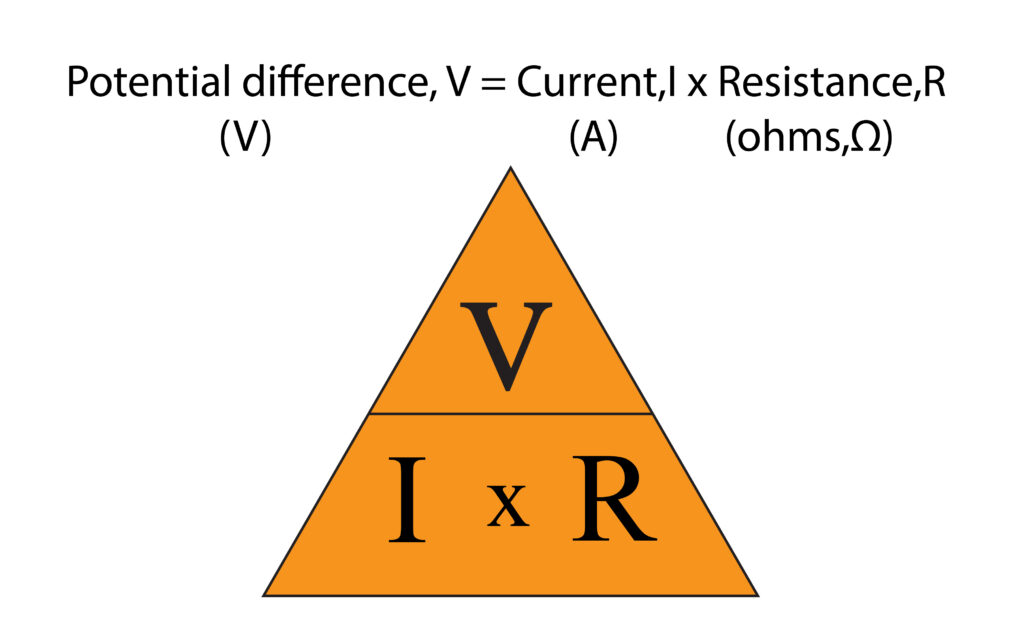AQA GCSE Potential difference, Current and Resistance(Physics)
Potential Difference
Potential difference is also known as voltage, but at GCSE use the term Potential difference
Potential difference is measured in volts (V) and is a measure of the amount of energy per unit charge (J/C).
1 V = 1 J/C
For current to flow in a circuit, there needs to be a potential difference.
Resistance
Resistance opposes the flow of current.
As resistance increases, current decreases assuming that potential difference stays constant.
Metals such as copper are good conductors, so they will have low resistance. Non metals such as plastic which are insulators have high resistance.
All components in a circuit have resistance. Resistance is measured in units called ohms (Ω).
What cause resistance?
Remember metallic structure?
At room temperature the positive metal ions have kinetic energy, so they are vibrating about a fixed position.
The delocalised electrons are trying to move through the structure between the positive metal ions.
These vibrating metal ions resist the movement of electrons through the structure causing resistance.
Calculations using Potential difference, Current and Resistance

Practice Questions
1.What is potential difference a measure of in a circuit?
2.Describe how resistance occurs in a circuit
3.Name 3 circuit components that would have resistance
4. A bulb as a current of 900mA and a resistance of 2 ohms. Calculate the potential difference across the bulb.
Absorption and Emission of EM Radiation
JJ Thomson and Plum pudding model
Ernest Rutherford and the Nuclear Model
Niels Bohr changing the Nuclear Model
Discovering the Proton and Neutron
Measuring radiation from radioactivity
Radiation types and properties
Random nature of radioactive decay
Radioactive contamination or irradiation
Hazards of contamination and irradiation
Studies on the effects of radiation on humans
Different half lives of radioactive isotopes
Nuclear Fission Chain Reaction
Writing nuclear fission equations
Drawing ray diagrams for a concave lens
Drawing Ray Diagram to produce a virtual image for a convex lens
Drawing ray diagram to produce a real image for a convex lens.
Specular and Diffuse Reflection
Seeing Coloured Objects Part 2
Viewing objects through coloured filters
Transparent, Translucent and Opaque